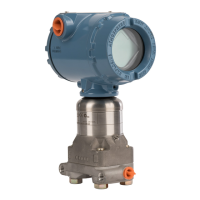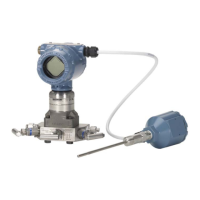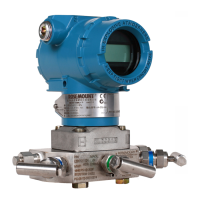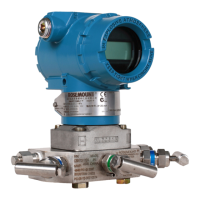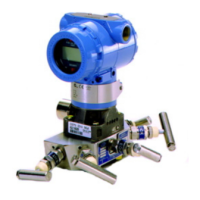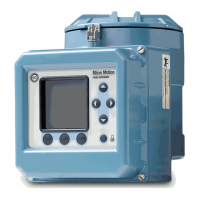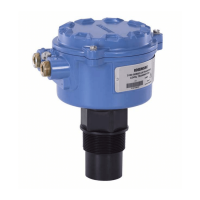48
Reference Manual
00809-0100-4853, Rev AB
Troubleshooting
January 2017
Troubleshooting
5.3 Measurement troubleshooting
The transmitter provides a means to display the current process variables and flow calculations. If the
process variable reading is unexpected, this section provides the symptoms and possible corrective
actions.
Table 5-1. Unexpected Process Variable (PV) Readings
Symptom Corrective action
High PV
Reading, Erratic
PV Reading,
Low or no PV
reading
Primary element
• Check for restrictions at the primary element.
• Check the installation and condition of the primary element.
• Note any changes in process fluid properties that may affect output.
Impulse piping
• Check to ensure the pressure connection is correct.
• Check for leaks or blockage.
• Check to ensure that blocking valves are fully open.
• Check for entrapped gas in liquid lines or for liquid in gas lines.
• Check to ensure the density of fluid in impulse lines is unchanged.
• Check for sediment in the transmitter process flange.
• Make sure that process fluid has not frozen within the process flange.
Power supply
• Check the output voltage of the power supply at the transmitter. It should be 9 to 30 V dc (9 to
17.5 V dc for FISCO)
Flow configuration (fully compensated mass flow feature board only)
• Verify flow configuration is correct for current application
Process temperature RTD input
• Verify the PT Mode (Normal, Fixed, Back-up)
• Verify the correct Callendar-Van Dusen coefficients
• Verify all wire terminations
• Verify sensor is a Pt 100 RTD
• Replace Pt 100 sensor
Sensor module
• Check for obvious defects, such as a punctured isolating diaphragm or fill fluid loss, and if
replacement is needed, contact the nearest Emerson Service Center.
• Check for proper fill fluid characteristics (see Fill fluid for more information).
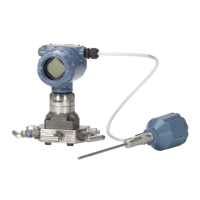
